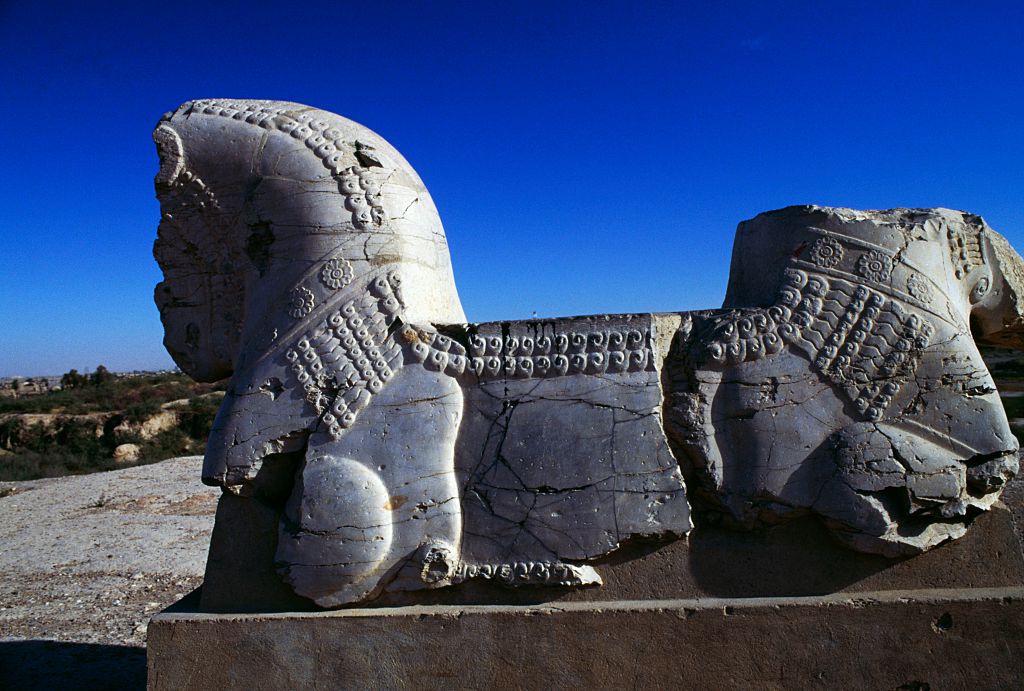
Senior officials at the Pentagon have rowed back on the possibility of carrying out US President Trump’s threat to bomb cultural sites in Iran. The US defense secretary acknowledged that carrying out the commander-in-chief’s threats, which have sparked worldwide condemnation, would contravene “the laws of armed conflict.”
Trump provoked international outrage from museum directors, academics, and artists after he tweeted on Saturday that the US would strike Iranian cultural sites “very fast and very hard” should the country kill any Americans or attack American assets in retaliation for the US-ordered killing of an Iranian general on Friday.
But in a news briefing at the Pentagon on Monday, January 6, Secretary of Defense Mark T. Esper appeared to contradict the president, telling reporters: “We will follow the laws of armed conflict.” He had been asked whether striking Iran’s cultural sites would constitute a war crime.
Another White House official told the New York Times that of the 52 sites in Iran that Trump tweeted were potential targets, none qualified as cultural sites.
The news that officials are distancing the US government from Trump’s threats will be met with a measure of relief from heritage professionals. In the wake of his provocative tweets and a statement to reporters, leading members of the international museum community condemned the president’s words. Responses included an unusually outspoken comment aimed at the White House from director Max Hollein and CEO Daniel Weiss of the Metropolitan Museum of Art, as well as a post on Instagram by its former director, Thomas Campbell. The director of Boston’s Museum of Fine Arts, Matthew Teitelbaum, also expressed his outrage, tweeting: “The preservation of antiquities and cultural sites should not be endangered by any US administration.”
Since Monday, more organizations have condemned intentional acts of destruction of culture, including the World Monuments Fund, which described Trump’s threats as “absolutely unacceptable,” and called on “people and governments everywhere to stand up for the protection of our shared heritage.”
The Association of Art Museum Directors, which represents the heads of 225 art museums in the US, Canada, and Mexico, also issued a statement urging the protection of Iran’s cultural heritage. The AAMD noted that “the United States has a long and important history of safeguarding art and artifacts during conflict, such as with the Monuments Men during World War II.”
James Cuno, the president of the J. Paul Getty Trust, weighed in as well: “It is tragic,” he wrote, “that today there would be any contemplation or rhetorical threat of further destruction of cultural heritage, particularly when what precious little remains in the world is already suffering from wanton destruction, looting, neglect, reckless overdevelopment, and climate change.”
Iran has 22 cultural sites listed on the UNESCO World Heritage List. Here are five of the irreplaceable treasures that have—in all likelihood—been spared thanks to the backlash against Trump’s threat, and some cooler heads in the Pentagon.
Persepolis
The Tachara palace of Darius the Great in Persepolis. Photo by Eric Lafforgue/Art in All of Us/Corbis via Getty Images.
The royal city founded by Darius I was the political and religious center of the Achaemenid Empire in the 5th century BC. Now a spectacular ruin, it is Iran’s most important ancient heritage site. Every summer between 1967 and 1977, Persepolis and the nearby city of Shiraz served as the setting of a groundbreaking international cultural festival bringing together leading artists from the West, Asia, and Africa.
The Friday Mosque
The Friday Mosque. Photo by Marka/Universal Images Group via Getty Images.
The Masjed-e Jāme’ in Isfahan is the oldest Friday mosque in Iran, which inspired the design of mosques across the region. Begun in the 8th century, its magnificent architecture is the result of 12 centuries of construction, incorporating the different styles of the Abbasid, Buyid, Seljuq, Ilkhanid, Muzzafarid, Timurid and Safavid eras.
Tabriz Historic Bazaar Complex
The old historic bazaar of the city Tabriz, East Azerbaijan, Iran. Photo by Arterra/Universal Images Group via Getty Images.
A crossroads on the Silk Road linking the East with the West, Tabriz’s vast bazaar has been famous since the 13th century. Rebuilt under a brick-vaulted roof in the 18th century, its magnificence reflects the market’s importance on the ancient trade route.
Golestan Palace
Tehran’s Golestan Palace. Photo by Atta Kenare/AFP via Getty Images.
The walled palace is in the heart of historic Tehran. Built by the ruling Qajar family in the late 18th century, Golestan Palace was further embellished in the 19th century in a style that combines traditional Persian designs with European influences.
Shushtar Historical Hydraulic System
Canals and waterfalls of the Shushtar historical hydraulic system. Photo by DeAgostini/Getty Images.
A triumph of 3rd-century civil engineering, the canals and waterfalls that form the Shushtar hydraulic complex powered mills, irrigated a vast plain and provided river transport as well as a defensive system for the fortified city.